Let's first start by proving the first replacement. Do take note that \$\operatorname{cos}\left(-x\right)=\operatorname{cos}\left(x\right)\$ and that \$\operatorname{sin}\left(-x\right)=-\operatorname{sin}\left(x\right)\$:
$$\begin{align*}
e^{j\left(\omega\,t+\theta\right)}&+e^{-j\left(\omega\,t+\theta\right)}\\
e^{j\left(\omega\,t+\theta\right)}&+e^{j\left(-\omega\,t-\theta\right)}\\
\left[\operatorname{cos}\left(\omega\, t+\theta\right)+j\cdot\operatorname{sin}\left(\omega\, t+\theta\right)\right]&+\left[\operatorname{cos}\left(-\omega\, t-\theta\right)+j\cdot\operatorname{sin}\left(-\omega\, t-\theta\right)\right]\\
\left[\operatorname{cos}\left(\omega\, t+\theta\right)+j\cdot\operatorname{sin}\left(\omega\, t+\theta\right)\right]&+\left[\operatorname{cos}\left(\omega\, t+\theta\right)-j\cdot\operatorname{sin}\left(\omega\, t+\theta\right)\right]\\
\operatorname{cos}\left(\omega\, t+\theta\right)&+\operatorname{cos}\left(\omega\, t+\theta\right)\\\\&= 2\operatorname{cos}\left(\omega\, t+\theta\right)
\end{align*}$$
Obviously, this equivalent is true:
$$\operatorname{cos}\left(\omega\, t+\theta\right)=\frac12\left[ e^{j\left(\omega\,t+\theta\right)}+e^{-j\left(\omega\,t+\theta\right)}\right]$$
So, this means the first two lines of the quoted text appears correct:
$$\begin{align*}
v\left(t\right)&=V_m\:e^{\sigma\,t}\operatorname{cos}\left(\omega\, t+\theta\right)\\\\
&=\frac12 V_m\:e^{\sigma\,t}\left[e^{j\left(\omega\,t+\theta\right)}+e^{-j\left(\omega\,t+\theta\right)}\right]
\end{align*}$$
Now I will go in tiny steps below, so there is no mistaking the simple algebra involved:
$$\begin{align*}
v\left(t\right)&=\frac12 V_m\:e^{\sigma\,t}\left[e^{j\left(\omega\,t+\theta\right)}+e^{-j\left(\omega\,t+\theta\right)}\right]\\\\
&=\frac12 V_m\:e^{\sigma\,t}\:e^{j\left(\omega\,t+\theta\right)}+\frac12 V_m\:e^{\sigma\,t}\:e^{-j\left(\omega\,t+\theta\right)}\\\\
&=\frac12 V_m\:e^{\sigma\,t+j\left(\omega\,t+\theta\right)}+\frac12 V_m\:e^{\sigma\,t-j\left(\omega\,t+\theta\right)}\\\\
&=\frac12 V_m\:e^{\sigma\,t+j\,\omega\,t+j\,\theta}+\frac12 V_m\:e^{\sigma\,t-j\,\omega\,t-j\,\theta}\\\\
&=\frac12 V_m\:e^{j\,\theta}\:e^{\sigma\,t+j\,\omega\,t}+\frac12 V_m\:e^{-j\,\theta}\:e^{\sigma\,t-j\,\omega\,t}\\\\
&=\frac12 V_m\:e^{j\,\theta}\:e^{\left(\sigma+j\,\omega\right)t}+\frac12 V_m\:e^{-j\,\theta}\:e^{\left(\sigma-j\,\omega\right)t}
\end{align*}$$
This seems too easy. So did I completely misunderstand your question?
